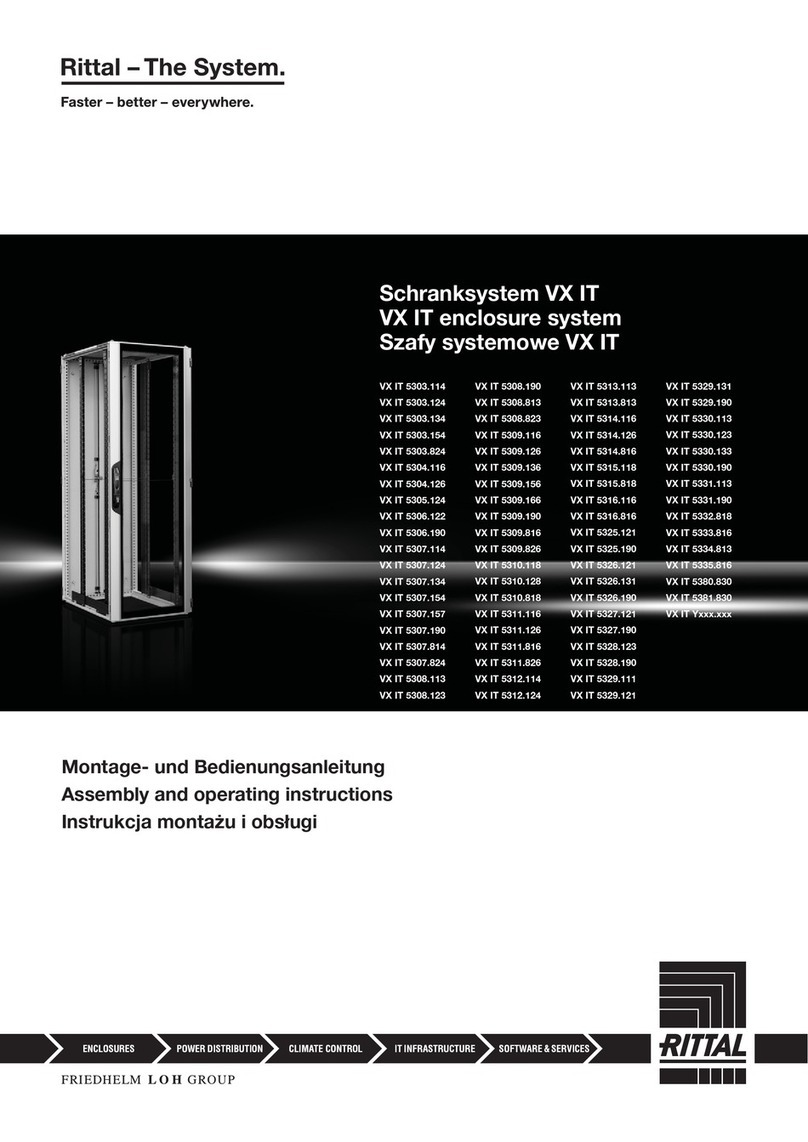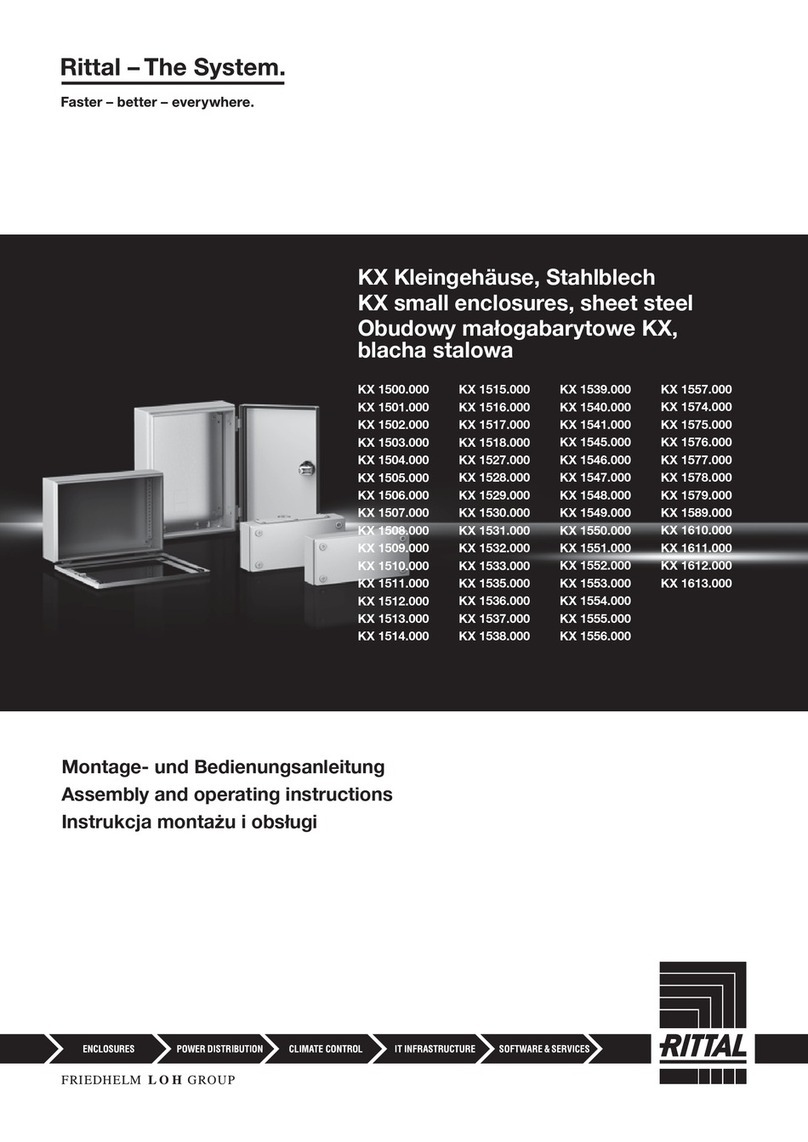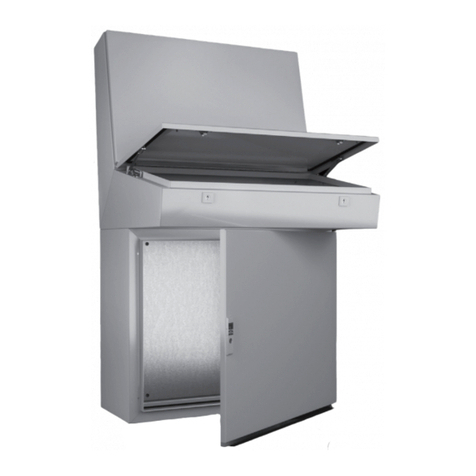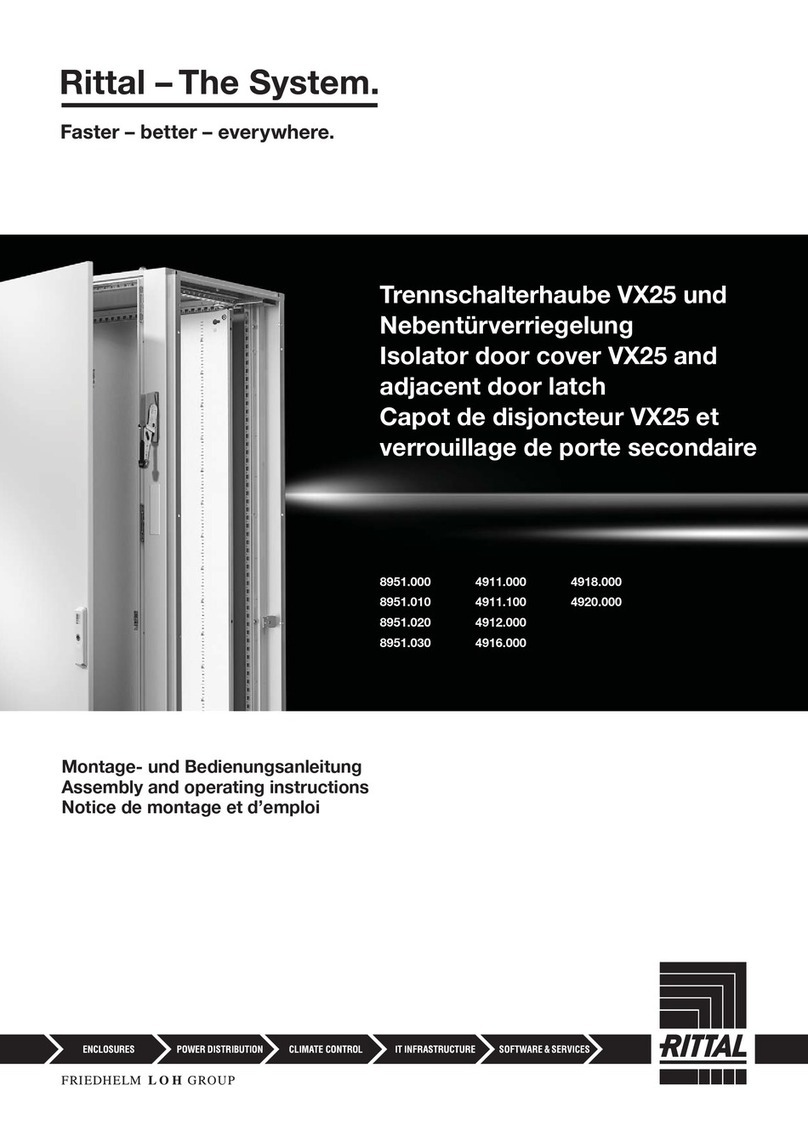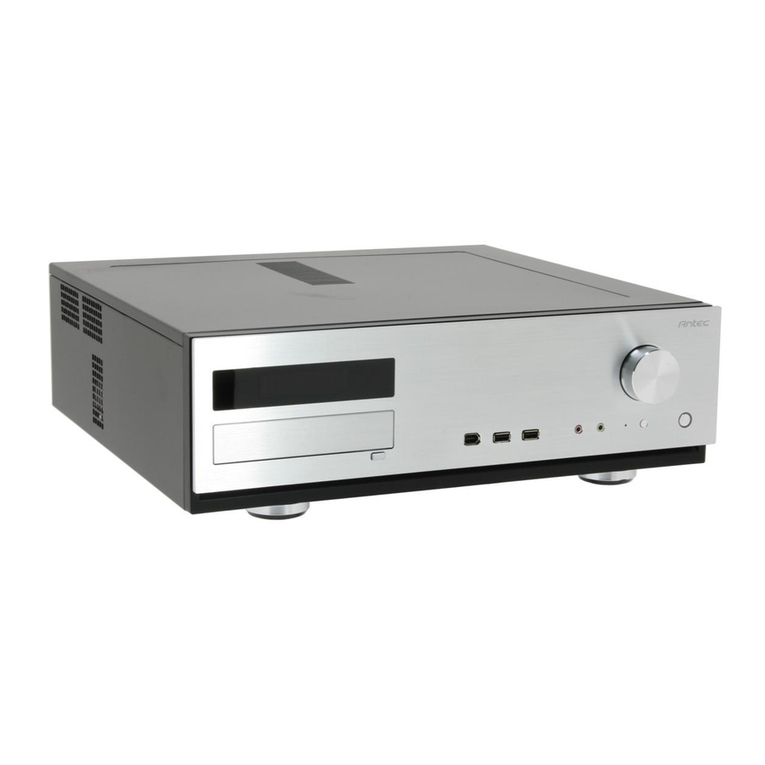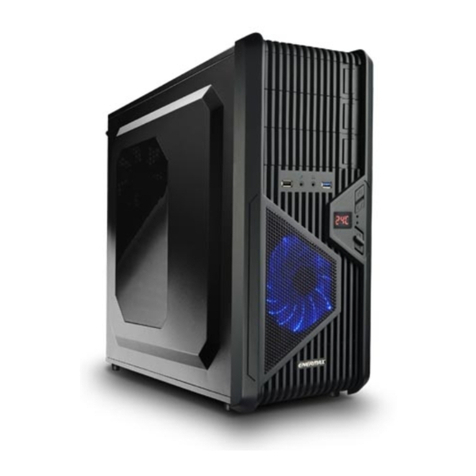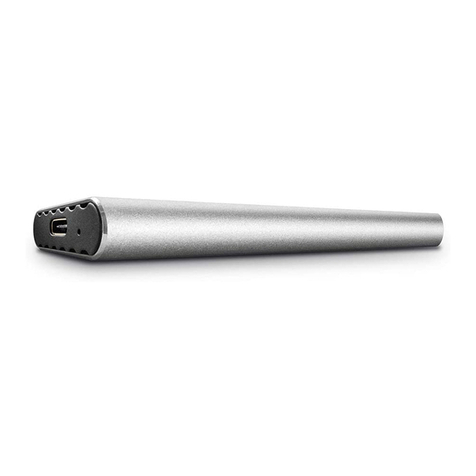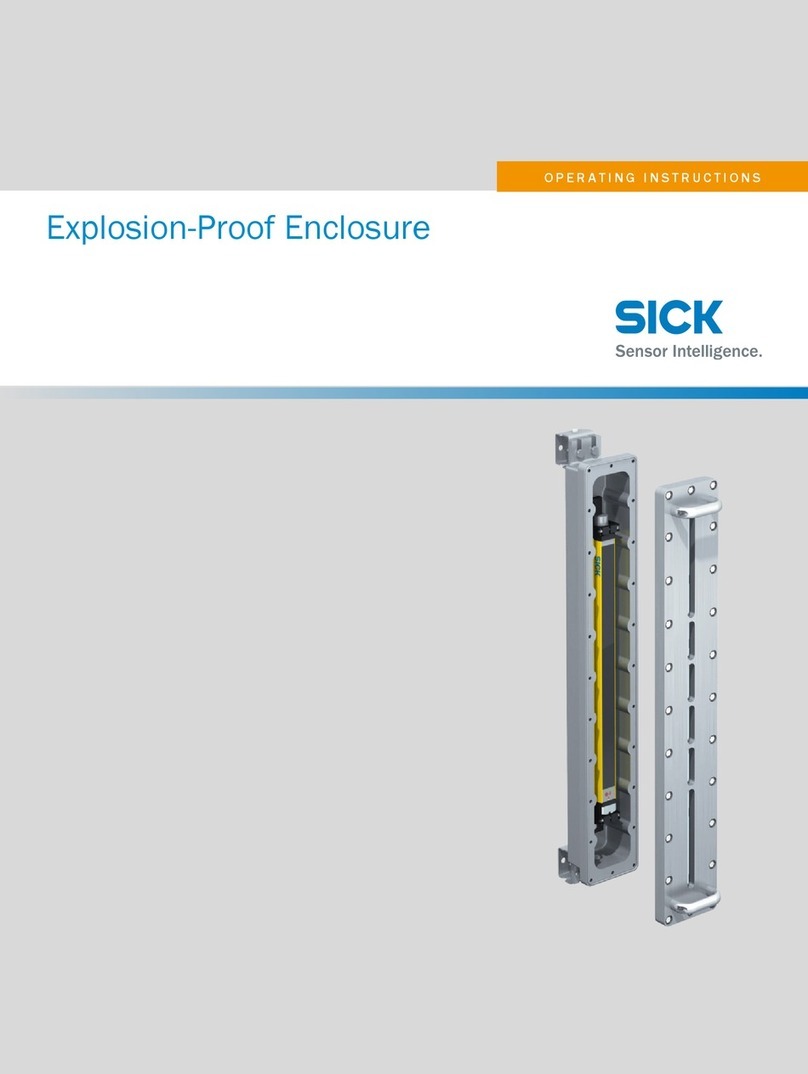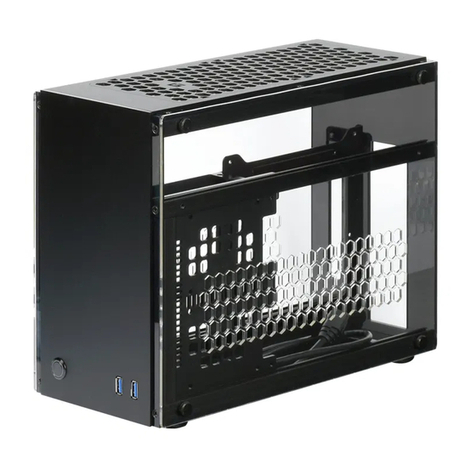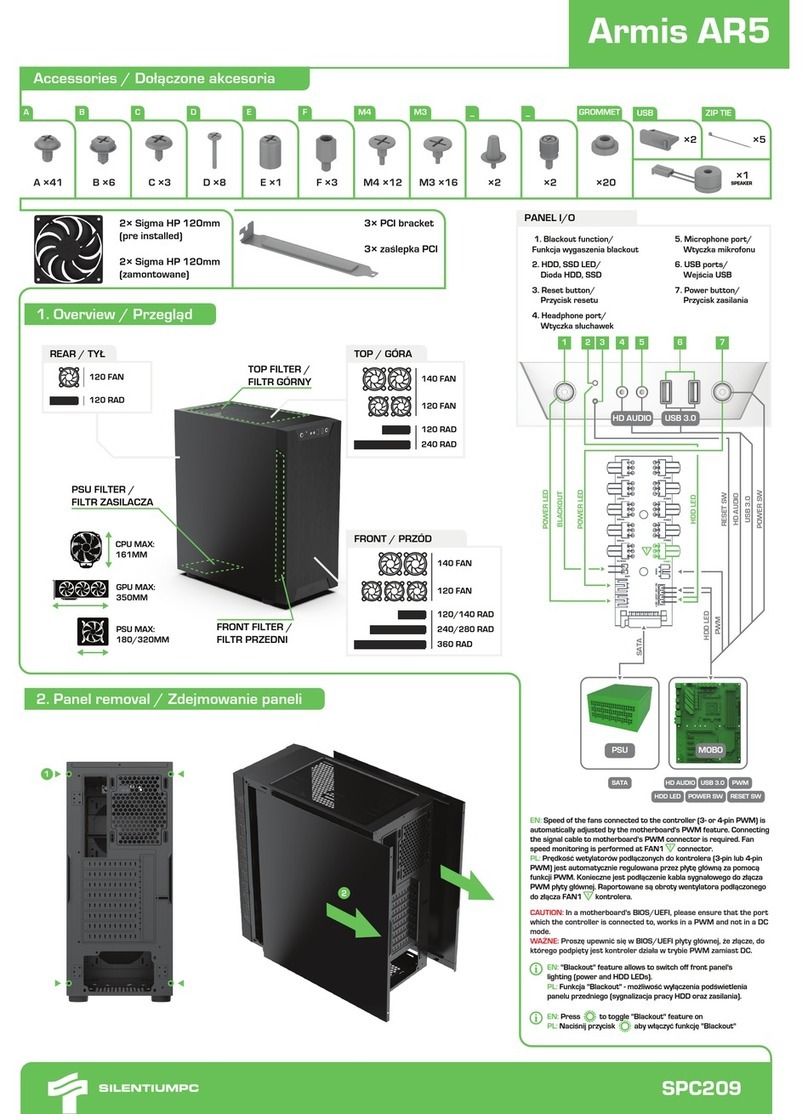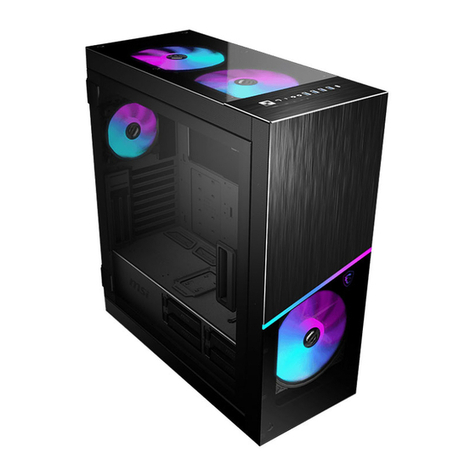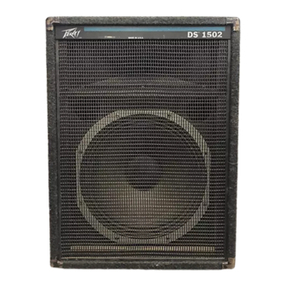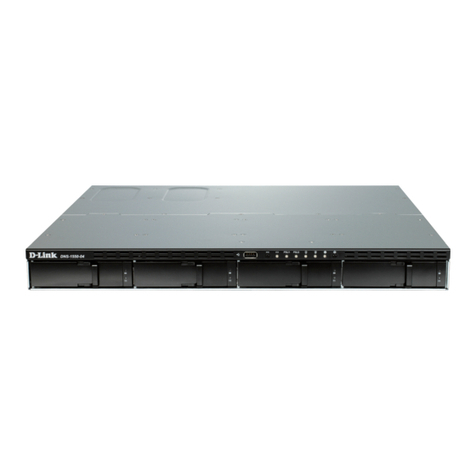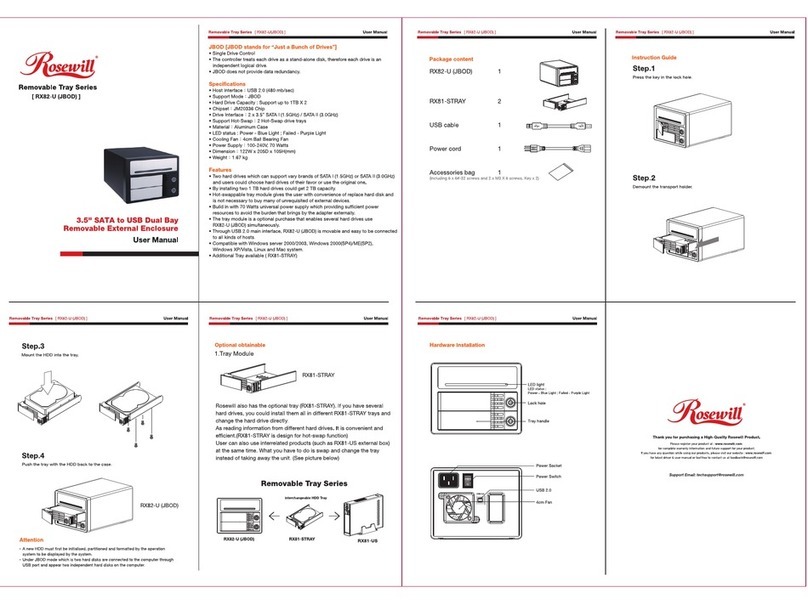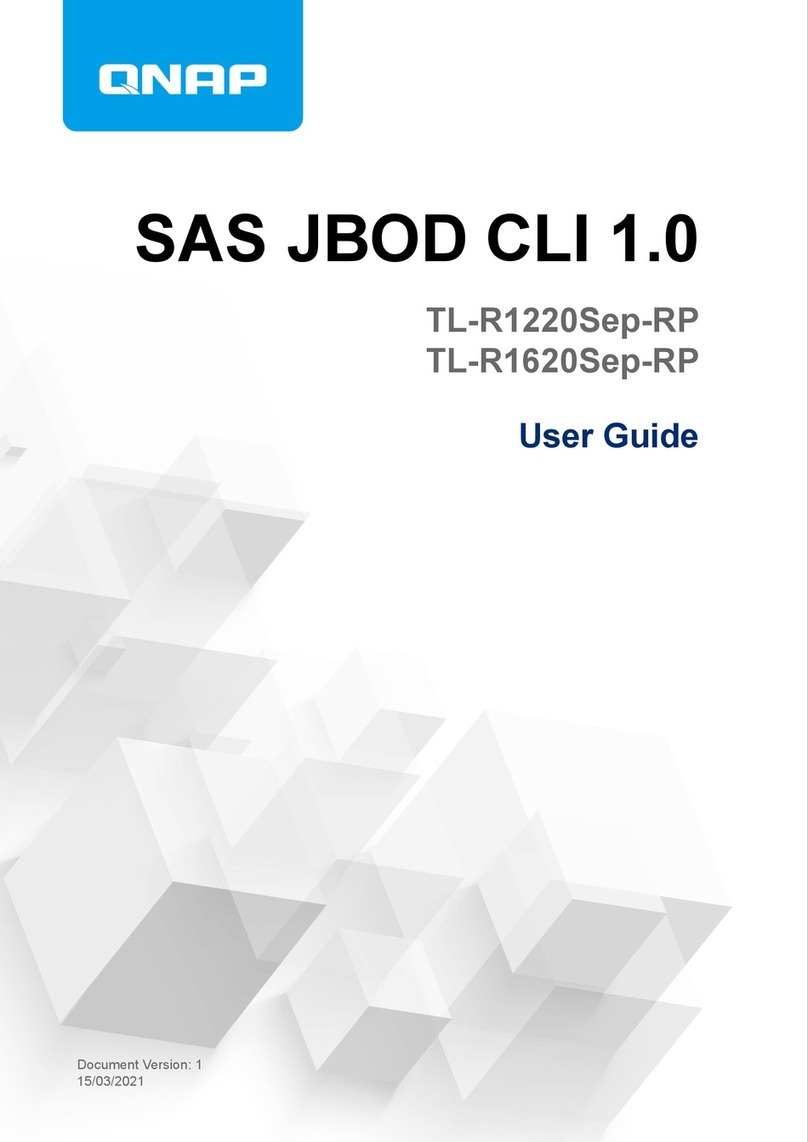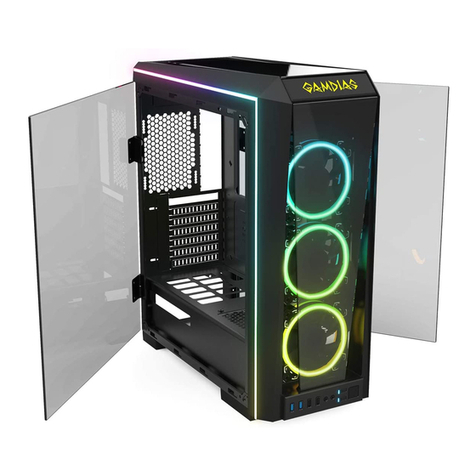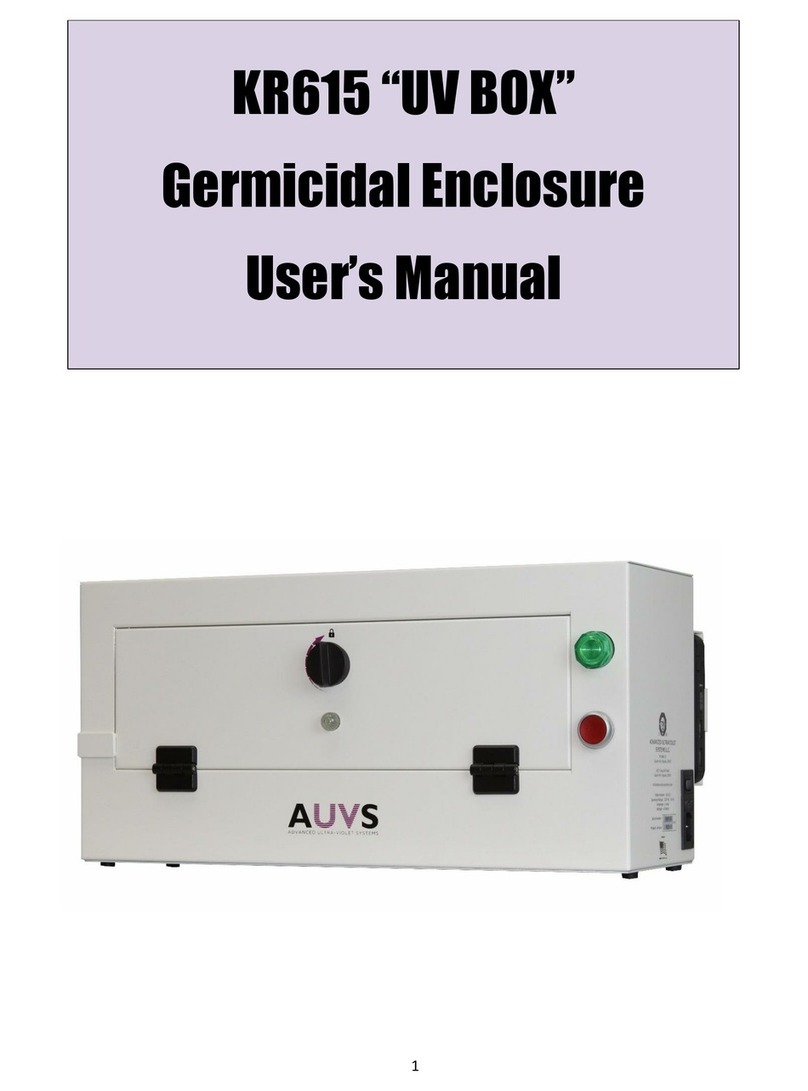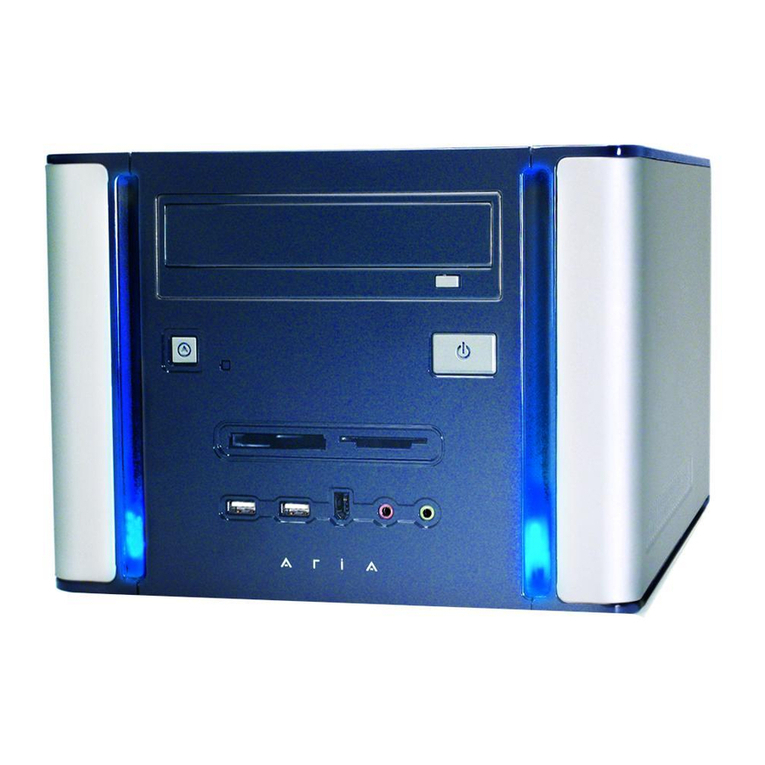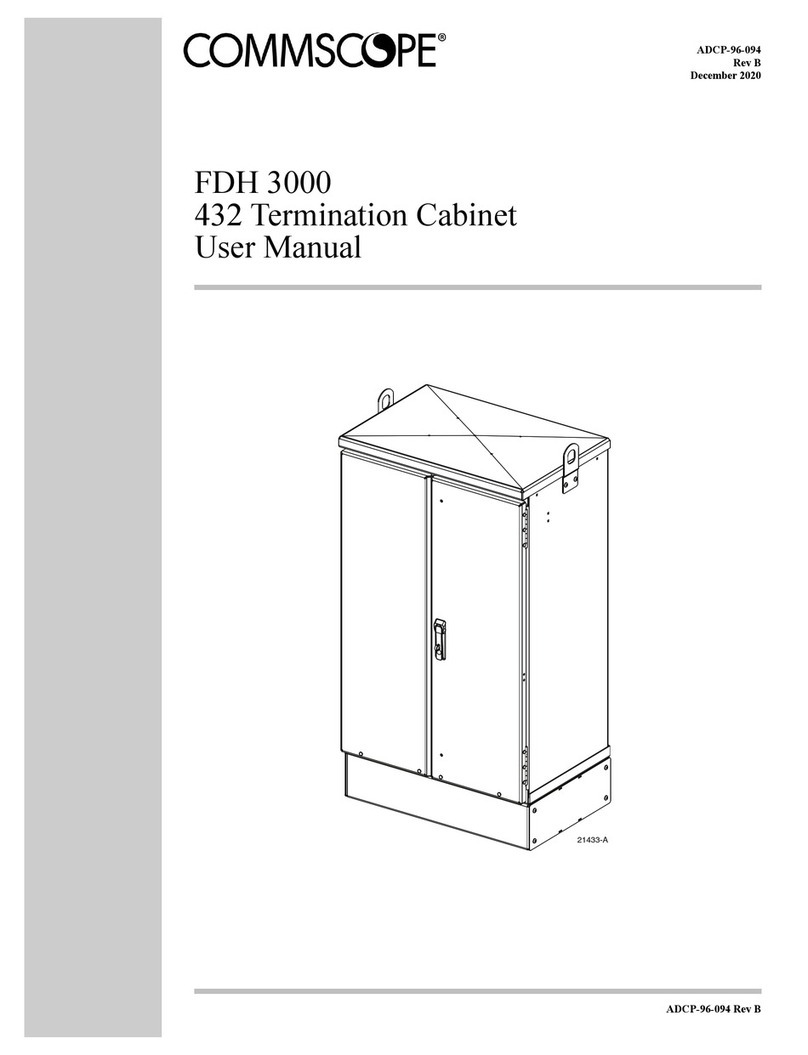
Rittal enclosure cooling unit Blue e+ Outdoor 3
Contents
EN
Contents
1 Notes on documentation .................. 4
1.1 CE labelling................................................... 4
1.2 Storing the documents.................................. 4
1.3 Symbols used in these operating
instructions ................................................... 4
1.4 Other applicable documents ......................... 4
2 Safety instructions ............................ 5
2.1 General safety instructions ............................ 5
2.2 Safety instructions for transportation............. 5
2.3 Safety instructions for assembly.................... 5
2.4 Safety instructions for installation .................. 5
2.5 Safety instructions for operation.................... 5
2.6 Safety instructions for maintenance............... 5
2.7 Operating and technical staff......................... 5
2.8 Other dangers when using the cooling unit ... 5
2.9 IT safety instructions ..................................... 6
2.9.1 Measures for products and systems ..................... 6
3 Product description .......................... 7
3.1 Functional description and components........ 7
3.1.1 Function ............................................................... 7
3.1.2 Components ........................................................ 8
3.1.3 Control ................................................................. 8
3.1.4 Safety devices ...................................................... 8
3.1.5 Condensation ....................................................... 8
3.1.6 Door limit switch ................................................... 8
3.2 Intended use, foreseeable misuse ................. 9
3.3 Scope of supply.......................................... 10
4 Transport and handling .................. 12
4.1 Delivery....................................................... 12
4.2 Unpacking .................................................. 12
4.3 Transport .................................................... 12
5 Installation ...................................... 14
5.1 Safety instructions....................................... 14
5.2 Siting location requirements ........................ 14
5.3 Assembly procedure ................................... 15
5.3.1 Assembly instructions ......................................... 15
5.3.2 Mounting options ............................................... 16
5.3.3 Make a mounting cut-out in the enclosure .......... 17
5.3.4 Fitting the cooling unit without a mounting frame 17
5.3.5 Fitting the cooling unit with a mounting frame ..... 20
5.3.6 Connect the condensate water discharge
(optional) ............................................................ 22
5.4 Electrical connection ................................... 23
5.4.1 Notes on electrical installation ............................. 23
5.4.2 Install the power supply ...................................... 25
5.4.3 Connect the alarm relays .................................... 26
5.4.4 Interfaces ........................................................... 26
6 Commissioning .............................. 28
7 Operation ....................................... 29
7.1 General....................................................... 29
7.2 Layout of the display ................................... 29
7.2.1 Start screen ........................................................ 29
7.2.2 Changing a parameter value ............................... 30
7.3 Information menu ....................................... 30
7.3.1 Temperature information .................................... 30
7.3.2 Device information .............................................. 30
7.3.3 Efficiency information .......................................... 31
7.4 Configuration menu.................................... 31
7.4.1 Temperature ....................................................... 31
7.4.2 Network ............................................................. 33
7.4.3 Alarm relays ....................................................... 34
7.4.4 Language settings .............................................. 34
7.4.5 Self-test .............................................................. 34
7.5 System messages...................................... 34
7.5.1 Occurrence of a malfunction ............................... 35
7.5.2 Display in case of errors ..................................... 35
7.5.3 Parallel device control ......................................... 35
7.6 List of system messages............................ 36
8 Inspection and maintenance ........... 39
8.1 Safety instructions for maintenance work ... 39
8.2 Notes on the refrigerant circuit ................... 39
8.3 Maintenance work on the cooling unit ........ 39
8.4 Compressed air cleaning............................ 39
8.4.1 Removing the cover ........................................... 39
8.4.2 Cleaning the components with compressed air .. 40
8.4.3 Re-fitting the cover ............................................. 40
9 Storage and disposal ...................... 41
10 Technical specifications .................. 42
11 List of spare parts ........................... 45
12 Drawings ........................................ 46
12.1 Mounting cut-outs on single-walled enclosure
panels without a mounting frame ............... 46
12.2 Mounting on single- and twin-walled
enclosure panels with a mounting frame .... 47
12.2.1 SK 3185330 ....................................................... 47
12.2.2 SK 3186330, SK 3187330, SK 3188340,
SK 3189340 ....................................................... 48
12.3 Dimensions and installation depths ............ 49
12.3.1 External mounting, partial internal mounting and
full internal mounting (SK 3185330) .................... 49
12.3.2 External mounting, partial internal mounting and
full internal mounting (SK 3186330 and
SK 3187330) ...................................................... 50
12.3.3 External mounting, partial internal mounting and
full internal mounting (SK 3188340 and
SK 3189340) ...................................................... 51
13 Accessories .................................... 52
14 Customer service addresses .......... 53
15 Compact service information .......... 57

